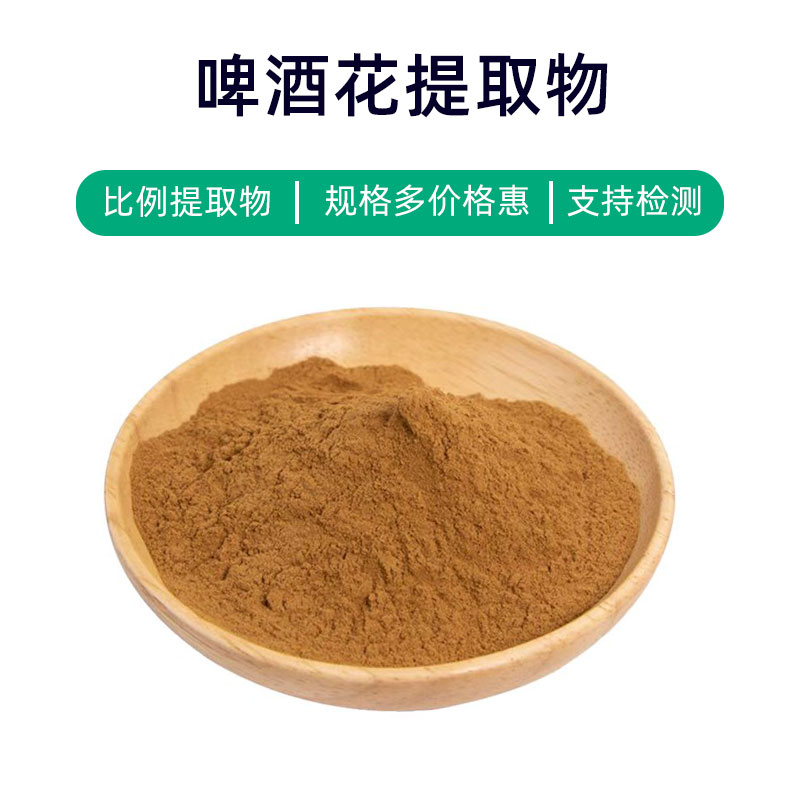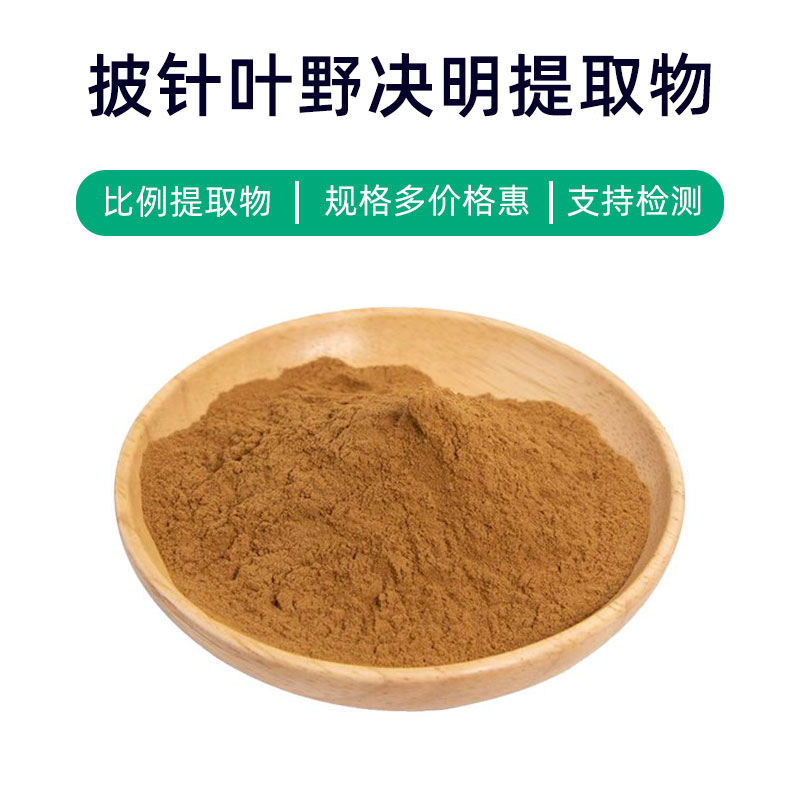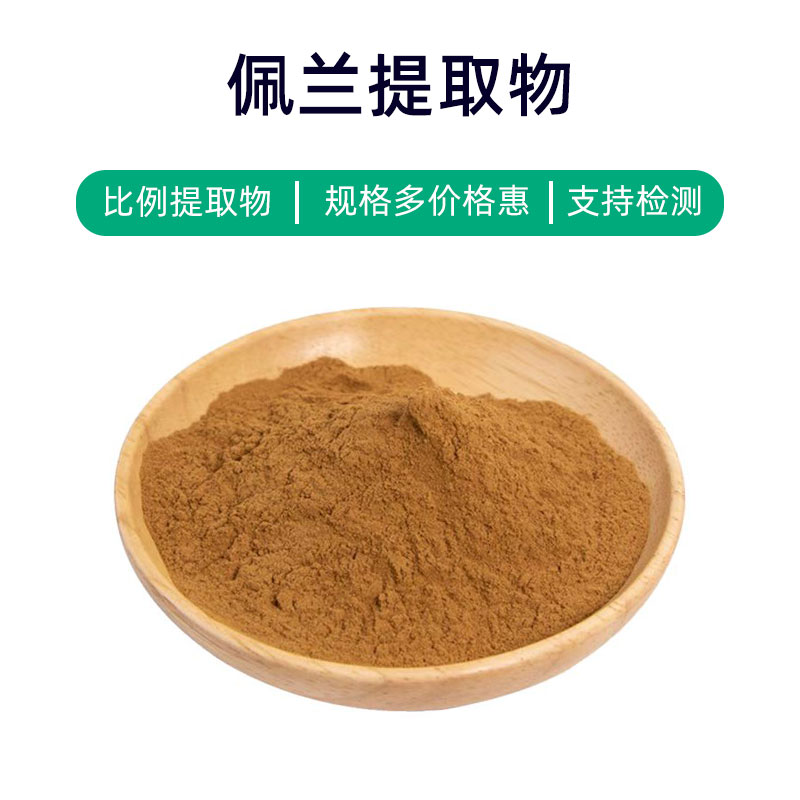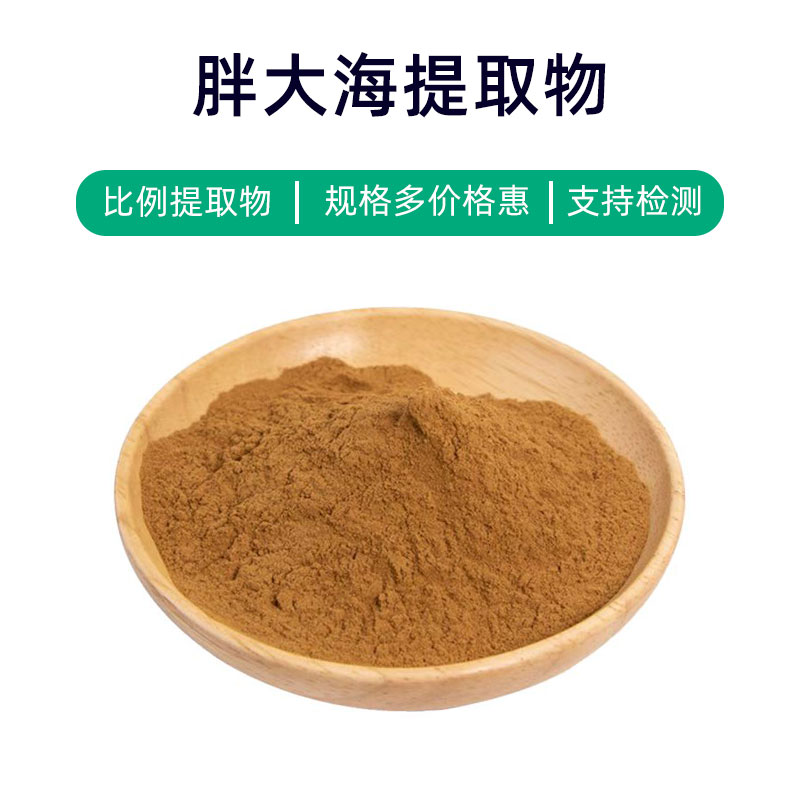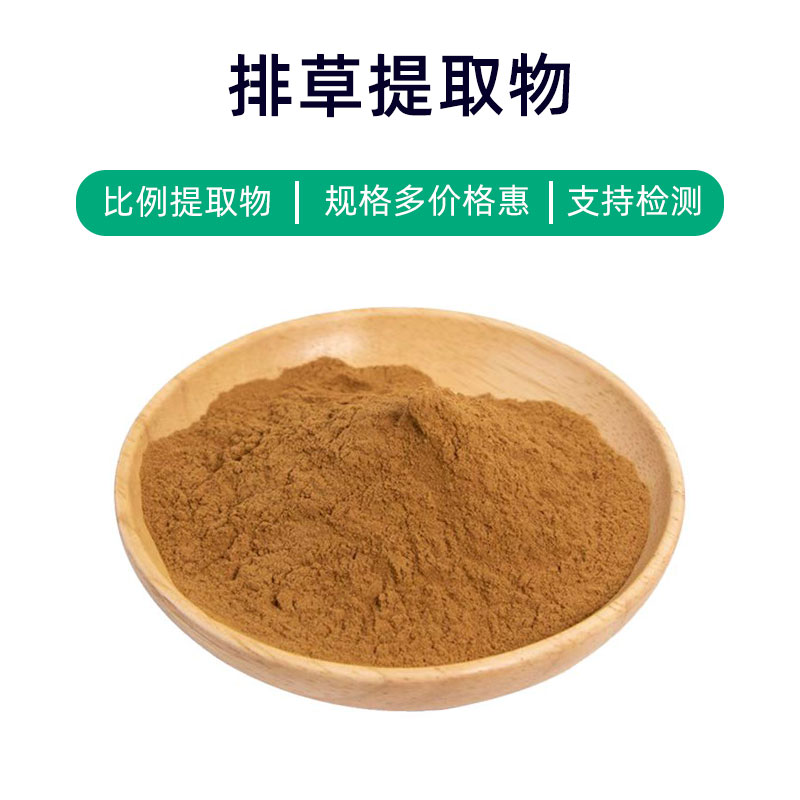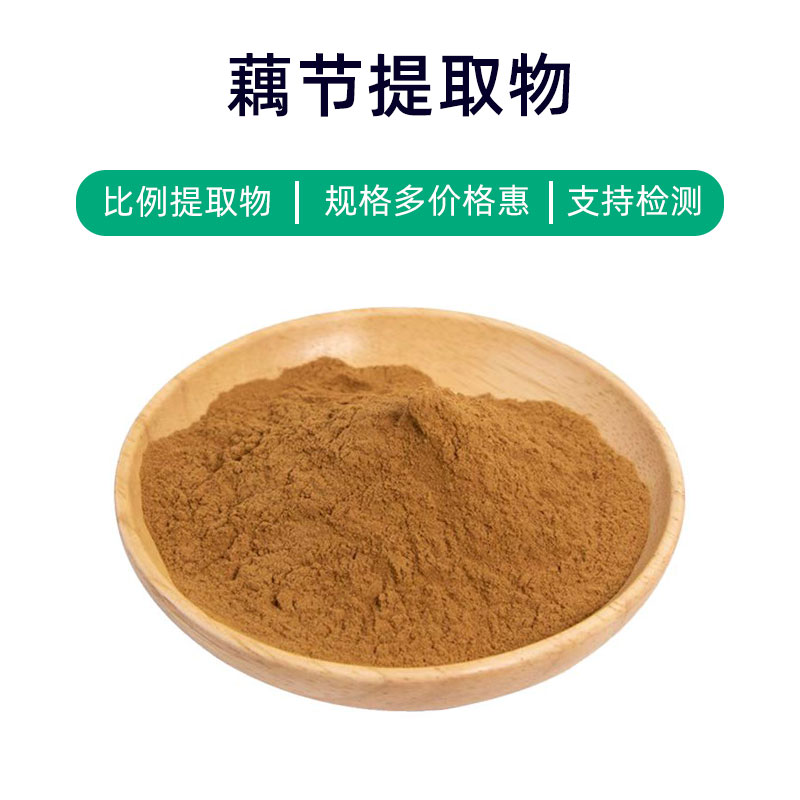Widevine Extract Product Introduction
Widevine extract is a natural plant extract derived from the roots, stems, and leaves of the Widevine plant. Its main components include flavonoids, alkaloids, and polysaccharides. These components confer various benefits and applications to the extract.
Firstly, Widevine extract has antioxidant properties, helping to neutralize free radicals in the body, reduce oxidative damage to cells, and support healthy cell function.
Secondly, Widevine extract is widely used in the fields of anti-inflammation and antibacterial applications. The active ingredients contained within it have anti-inflammatory effects, alleviating inflammatory responses and related symptoms of diseases. Additionally, it exhibits antibacterial properties, inhibiting the growth of bacteria and fungi, thus aiding in the prevention and treatment of diseases related to microbial infections.
Moreover, Widevine extract is also utilized in beauty and health products. Its antioxidant and anti-inflammatory effects can help improve skin condition, reduce oxidative damage and inflammation, promoting healthy and youthful skin.
In summary, Widevine extract, as a natural plant extract, offers various benefits and applications, including antioxidant, anti-inflammatory, and antibacterial effects, suitable for the fields of medicine, dietary supplements, and cosmetics, providing a natural and effective choice for health and beauty.
Widevine Extract Production Process
The production process of Widevine extract generally includes the following key steps:
- Raw Material Collection and Preparation: Fresh Widevine plants, including their roots, stems, and leaves, should first be collected. The collected plants should be cleaned and dried to remove impurities and surface dirt, preparing them for the extraction process.
- Extraction Process: Extraction is one of the key steps in producing Widevine extract. Common extraction methods include water extraction and alcohol extraction. During the extraction process, the prepared Widevine plant is immersed in an appropriate solvent (such as water or alcohol) to extract the active ingredients.
- Concentration and Filtration: The resulting extract solution needs to be concentrated, usually by evaporation or reduced pressure concentration, to remove the solvent and obtain a concentrated extract. Afterward, the concentrated solution is filtered to remove residues and impurities, ensuring the purity and quality of the extract.
- Drying and Crushing: The concentrated extract solution needs to be dried to remove any remaining moisture, resulting in a dry extract. The dried extract is typically solid and may need to be crushed or ground to achieve the desired particle size and form.
- Packaging and Storage: Finally, the crushed extract is packaged and stored. Sealed packaging is generally used to protect against moisture and sunlight, and it should be stored in a dry, well-ventilated environment to ensure product quality and stability.
This is a general production process for Widevine extract, and specific production methods may vary depending on the manufacturer and equipment conditions.
Widevine Extract Effects and Side Effects
As a natural plant extract, Widevine extract has widespread applications in traditional medicine and dietary supplements. Its main effects and benefits include:
- Anti-Inflammatory Effects: Widevine extract contains various compounds with anti-inflammatory activity, such as flavonoids and phenylpropanoids, which can inhibit the release of inflammatory mediators and alleviate inflammatory responses, providing relief for conditions like arthritis and rheumatism.
- Antioxidant Effects: Rich in various antioxidant components, such as polyphenols and vitamins, Widevine extract can neutralize free radicals, reduce oxidative stress damage to the body, helping to delay aging and enhance immunity.
- Diuretic Effects: The active components in Widevine extract possess mild diuretic effects, helping to promote urine output and reduce body swelling and pain.
- Antibacterial Effects: Widevine extract contains some compounds with antibacterial properties, capable of inhibiting the growth of bacteria, fungi, and other microorganisms, offering auxiliary treatment for some infectious diseases.
- Tumor Growth Inhibition: Some studies suggest that the active components in Widevine extract may inhibit the growth of tumor cells, showing certain inhibitory effects on specific tumors, though the exact mechanisms require further investigation.
Although Widevine extract offers various benefits, certain potential side effects and precautions should be noted:
- Excessive use may lead to digestive discomfort, diarrhea, and other gastrointestinal symptoms.
- Some individuals may experience allergic reactions to Widevine extract, such as skin redness, swelling, and itching; thus, those with sensitivities should use it cautiously.
- Pregnant and breastfeeding women, children, and patients with severe chronic illnesses should consult a doctor before use.
- When used in conjunction with other medications, potential interactions may occur; thus, it should be avoided or used under medical supervision.
Overall, Widevine extract serves as a natural plant extract with numerous benefits, including anti-inflammatory, antioxidant, and diuretic properties; however, caution is necessary to avoid excessive use and adverse interactions with other medications.
Widevine Extract Application Scenarios and Dosage
Widevine extract is widely utilized in pharmaceuticals, food, and cosmetics. Below are its specific application scenarios and recommended dosages:
- Pharmaceutical Applications:
- Widevine extract is commonly used as an herbal ingredient in traditional medicine, prepared in various formulas like Widevine granules and oral liquids for treating inflammatory diseases, such as rheumatic arthritis.
- Dosage: Typically administered orally, 10-15 grams per dose, three times daily, adjustable according to specific conditions.
- Food Applications:
- Widevine extract can serve as a food additive to enhance the taste and nutritional value of food products, such as tea beverages and biscuits.
- Dosage: The amount added varies according to the product formula, generally 5-10 grams per 100 grams of food.
- Cosmetic Applications:
- Known for its anti-inflammatory and antioxidant properties, Widevine extract is frequently incorporated into skincare products and masks to alleviate skin inflammation and provide moisturization.
- Dosage: The amount used is determined based on the product formula, with a recommended concentration in skincare products typically ranging from 1-5%.
The application of Widevine extract in pharmaceuticals, food, and cosmetics requires dosage determination based on specific product formulations and intended uses. Users should carefully read product instructions or consult professionals before use.
Widevine Plant Overview: Source, Distribution, and Growth Environment
Widevine (scientific name: Paederia scandens) is a common climbing plant belonging to the Rubiaceae family. Below is a detailed overview of its source, distribution, and growth environment:
Source Overview:
Widevine is a common perennial climbing plant with rich medicinal value. It thrives in subtropical and tropical regions in forests, forest edges, shrublands, and along riverbanks, making it a relatively common wild plant. Its leaves have a strong adaptability to growth environments, often thriving in sunny, moist conditions.
Distribution:
Widevine is primarily distributed in East Asia, Southeast Asia, South Asia, and Oceania, including countries like China, Japan, India, Thailand, Vietnam, and the Philippines. In China, Widevine is widely spread across southern, eastern, central, and southwestern regions.
Growth Environment:
Widevine prefers warm and humid environments, typically found in low mountain areas, alongside streams, in shrublands, and under sparse forests at elevations below 500 meters. Its soil requirements are not strict, showing strong adaptability to sandy, loamy, and calcareous soils, although it struggles in poorly drained or arid conditions. Widevine typically thrives in shady, moist environments but can also adapt to stronger sunlight.
The growth characteristics of Widevine provide it with a competitive advantage in the wild while supplying abundant nutrients and adequate moisture, supporting its growth and reproduction.
In summary, Widevine is a common wild climbing plant primarily found in warm and humid subtropical and tropical regions, with a widespread distribution across East Asia, Southeast Asia, and other areas.
Widevine Extract Processing and Storage
The processing of Widevine extract typically involves the following steps: First, fresh Widevine plants are collected and undergo initial washing and processing. Then, the plants are ground or chopped to better release the active components. Appropriate extraction methods (such as water extraction or alcohol extraction) are then used to obtain the extract. Finally, the extract undergoes filtration, concentration, drying, and other treatments to produce the finished Widevine extract.
For storage and preservation, Widevine extract should be kept in a cool, dry, and well-ventilated area, away from direct sunlight and high temperatures. Additionally, it should not come into contact with toxic substances, ensuring that the container is well sealed to prevent moisture from entering. Regular checks of the extract's quality and condition should be conducted to avoid any abnormalities.
Monica Sun is a seasoned expert in the plant extraction industry with over a decade of experience in research and production. She specializes in the extraction and purification of plant active ingredients, focusing on driving innovation in natural product applications. Monica has participated in the development of multiple functional plant extracts, delivering high-value natural raw material solutions for the health food, pharmaceutical, and dietary supplement sectors.









